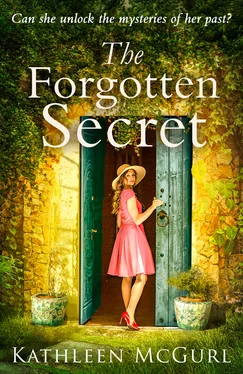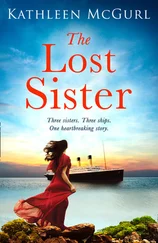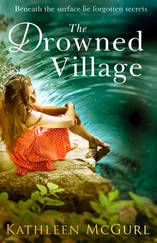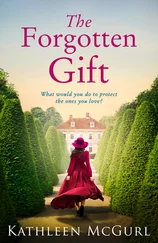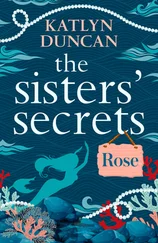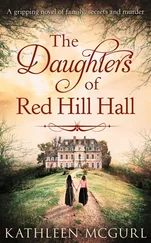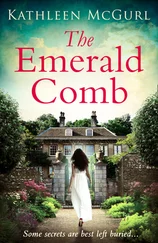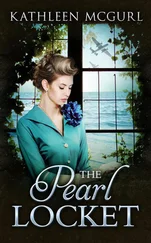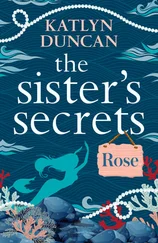KATHLEEN MCGURLlives near the sea in Bournemouth, UK, with her husband and elderly tabby cat. She has two sons who are now grown-up and have left home. She began her writing career creating short stories, and sold dozens to women’s magazines in the UK and Australia. Then she got side-tracked onto family history research – which led eventually to writing novels with genealogy themes. She has always been fascinated by the past, and the ways in which the past can influence the present, and enjoys exploring these links in her novels.
You can find out more at her website: http://kathleenmcgurl.com/, or follow her on Twitter: @KathMcGurl, Instagram: @KathleenMcGurlor Facebook.
The Emerald Comb
The Pearl Locket
The Daughters of Red Hill Hall
The Girl from Ballymor
The Drowned Village
The Forgotten Secret
KATHLEEN MCGURL

HQ
An imprint of HarperCollins Publishers Ltd.
1 London Bridge Street
London SE1 9GF
First published in Great Britain by HQ in 2019
Copyright © Kathleen McGurl 2019
Kathleen McGurl asserts the moral right to be identified as the author of this work.
A catalogue record for this book is available from the British Library.
This novel is entirely a work of fiction. The names, characters and incidents portrayed in it are the work of the author’s imagination. Any resemblance to actual persons, living or dead, events or localities is entirely coincidental.
All rights reserved under International and Pan-American Copyright Conventions. By payment of the required fees, you have been granted the non-exclusive, non-transferable right to access and read the text of this e-book on-screen. No part of this text may be reproduced, transmitted, downloaded, decompiled, reverse engineered, or stored in or introduced into any information storage and retrieval system, in any form or by any means, whether electronic or mechanical, now known or hereinafter invented, without the express written permission of HarperCollins.
E-book Edition © March 2019 ISBN: 9780008236991
Version: 2019-02-26
Table of Contents
Cover
About the Author
Also by Kathleen McGurl
Title Page
Copyright
Dedication
Historical Note
Chapter 1
Chapter 2
Chapter 3
Chapter 4
Chapter 5
Chapter 6
Chapter 7
Chapter 8
Chapter 9
Chapter 10
Chapter 11
Chapter 12
Chapter 13
Chapter 14
Chapter 15
Chapter 16
Chapter 17
Chapter 18
Chapter 19
Chapter 20
Chapter 21
Chapter 22
Chapter 23
Chapter 24
Chapter 25
Chapter 26
Chapter 27
Chapter 28
Chapter 29
Chapter 30
Chapter 31
Acknowledgements
Extract
Dear Reader
Keep Reading …
About the Publisher
To all my Irish in-laws
– this one’s for you
If you were educated in Ireland you’ll probably know all this already, in which case feel free to skip this section. Everyone else – please read on. I hope this will help provide some context for the novel. I’ll keep it as short as possible!
By the early twentieth century, Ireland had been ruled by England since Norman times. Over the years there had been various uprisings: notably Wolfe Tone’s United Irishmen rebellion of 1798. In response to this, the British Parliament passed the Acts of Union in 1800, formalising Ireland’s status as part of the United Kingdom of Great Britain and Ireland.
Many Irish were still unhappy under British rule. Harsh penal laws against Catholics and the aftermath of the Great Famine of the 1840s led to ever greater hostility against English landlords. In the late 1800s and early 1900s there was much discussion in parliament about the possibility of ‘Home Rule’ for Ireland. By 1914 a Government of Ireland bill was making its way through the British parliament system when the First World War broke out. It was put on hold.
But Irish nationalists weren’t prepared to wait for the end of the war for discussion to resume. At Easter 1916 various Irish nationalist forces combined in an uprising, taking control of parts of Dublin. The Proclamation of the Republic was read out from the steps of the General Post Office, declaring Ireland’s independence. British troops soon quashed the uprising, and most of its leaders were executed.
In the parliamentary elections of 1918 just after the end of the war, Ireland’s primary nationalist party Sinn Fein won a large majority of the Irish seats in parliament. However, they refused to swear the required oath of allegiance to the King, and instead set up the first Dáil Éireann (Irish Council), declaring Ireland to be an independent nation. Thus, Ireland slid into war against Britain. (One Sinn Fein MP was Constance Markievicz, the first woman to be elected to the UK Parliament. She was in jail at the time, for her part in the 1916 uprising. Constance was also the founder of the Fianna Éireann, ‘Warriors of Ireland’, a kind of military boy scouts, whose alumni went on to join the Republican army.)
In the cities, British troops kept control but in provincial areas it was the paramilitary police force – the Royal Irish Constabulary – that was left fighting against the nationalist Irish Volunteers. The RIC was reinforced by the undisciplined Black and Tans, named for their mismatched ex-army and police uniforms.
The War of Independence was largely a guerrilla war, with atrocities committed by both sides. It was characterised by attacks and counter-attacks, shootings and reprisal actions, often against civilians. Towns were looted, homes and businesses were burned, and people executed.
In 1921 the British prime minister offered a truce: the terms of which divided Ireland, forming the Irish Free State but with six counties of Ulster remaining part of the United Kingdom. The Irish leadership were split over whether to agree, but eventually signed the treaty. This disagreement led inevitably to civil war, between those who were pro- and anti-treaty, that lasted from 1922 until a ceasefire in spring 1923.
During World War II Ireland remained neutral, and it was after ‘the Emergency’ (as it was termed in Ireland) that the Republic of Ireland was formally inaugurated in 1948.
The anti-treaty nationalist forces combined as the Irish Republican Army, and remained active on and off throughout the decades, fighting for Ireland to be once more united. Their campaigns escalated during the 1970s and 80s, a period known as ‘the Troubles’, and only came to an end with the signing of the Good Friday Agreement of 1998.
In this novel, the historical chapters start in 1919, just as the War of Independence was escalating in intensity. I’ve referred to Irish nationalist forces during the War of Independence as ‘Volunteers’ throughout, though there were various groups involved. Volunteers from this period are often known now as the ‘old IRA’. Blackstown is a fictional place.
Clare, February 2016
We rounded a corner, turned off the narrow country lane and onto a gravel track, drove past a little copse of birch trees and there it was. Clonamurty Farm, County Meath, Ireland. Old, tired, dilapidated and in urgent need of repair. But it was mine. All mine, and only mine, or soon would be. A little shudder of excitement ran through me, and I turned my face away so that Paul, my husband, would not see the smile that had crept onto my face.
Читать дальше
